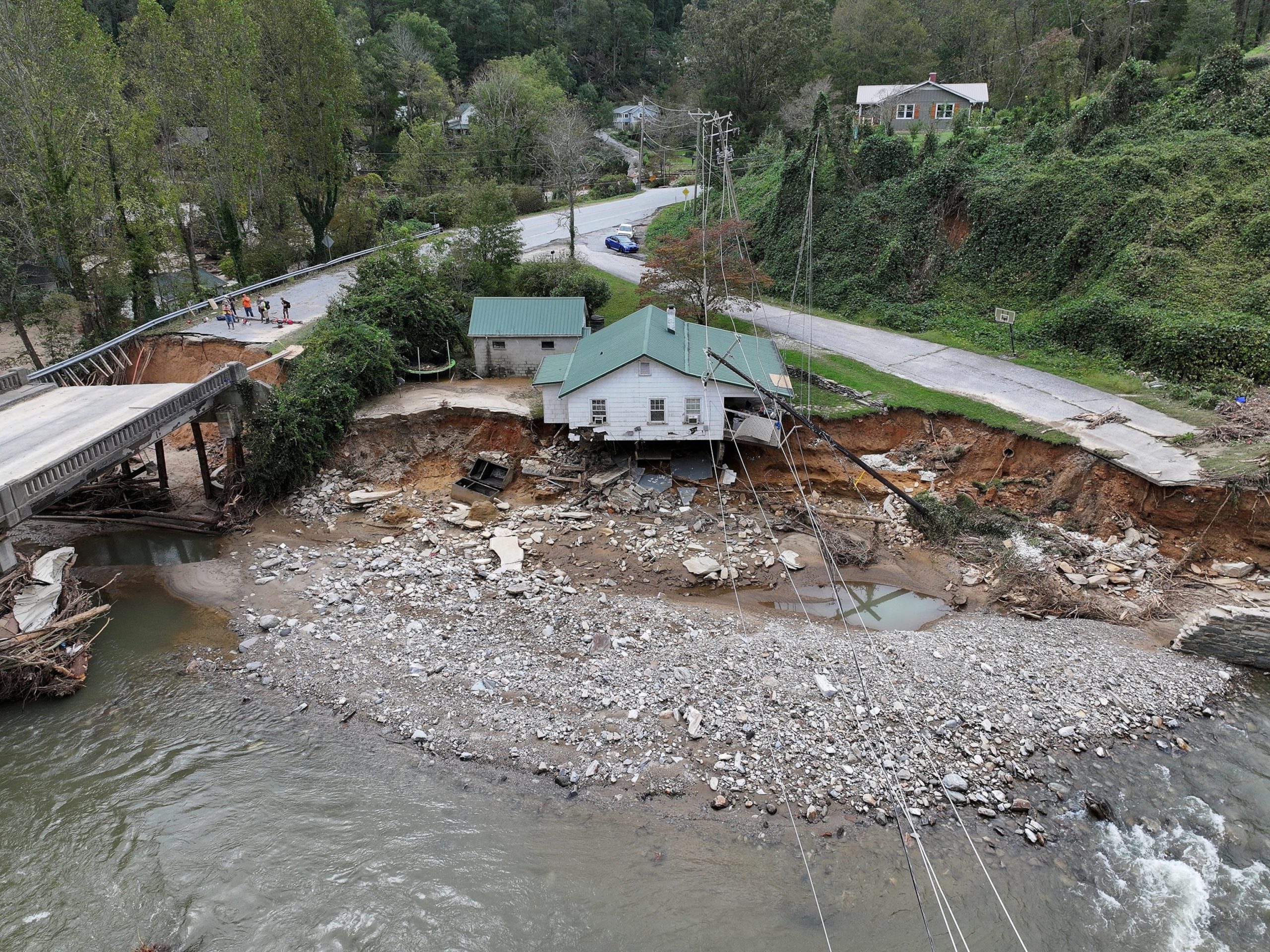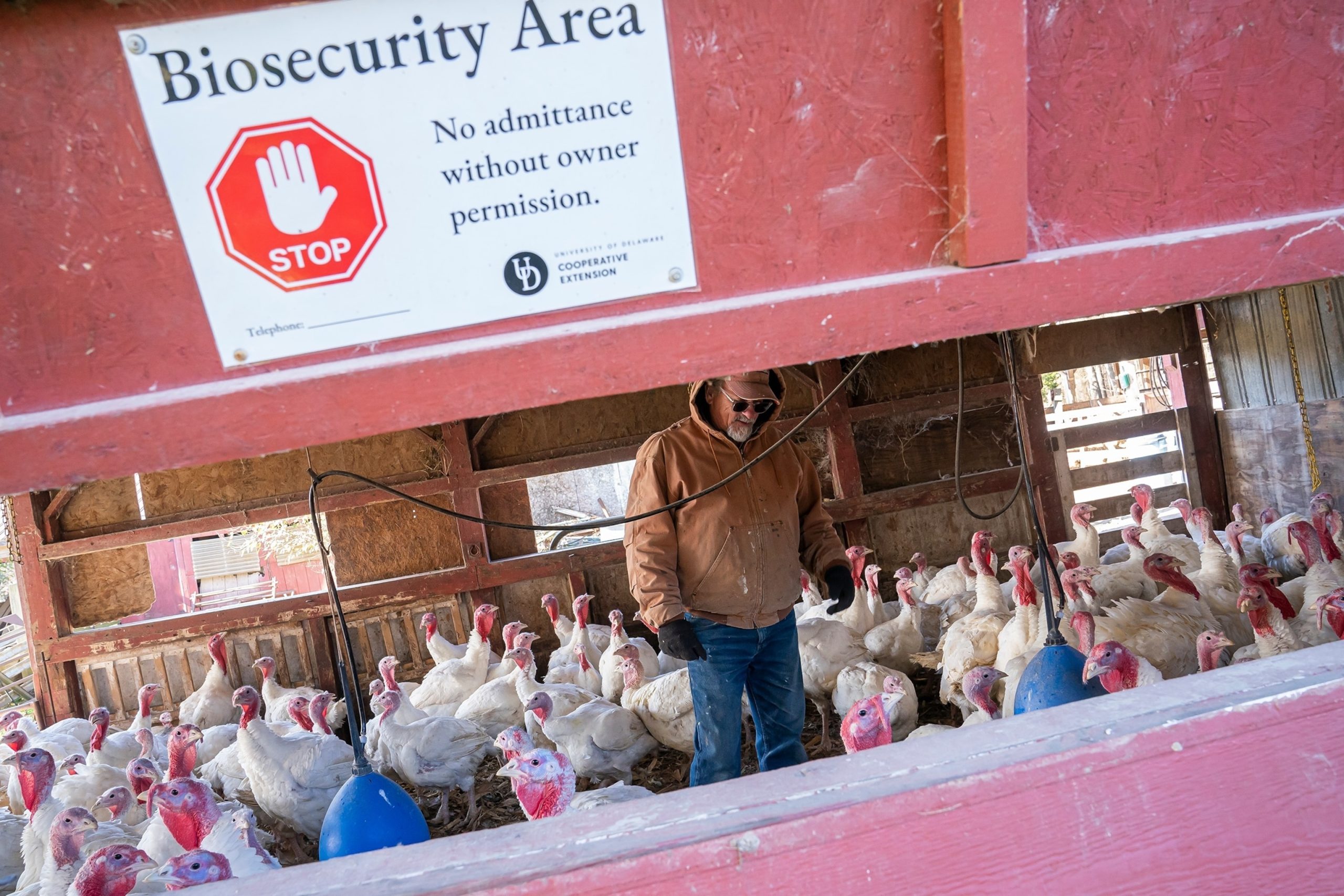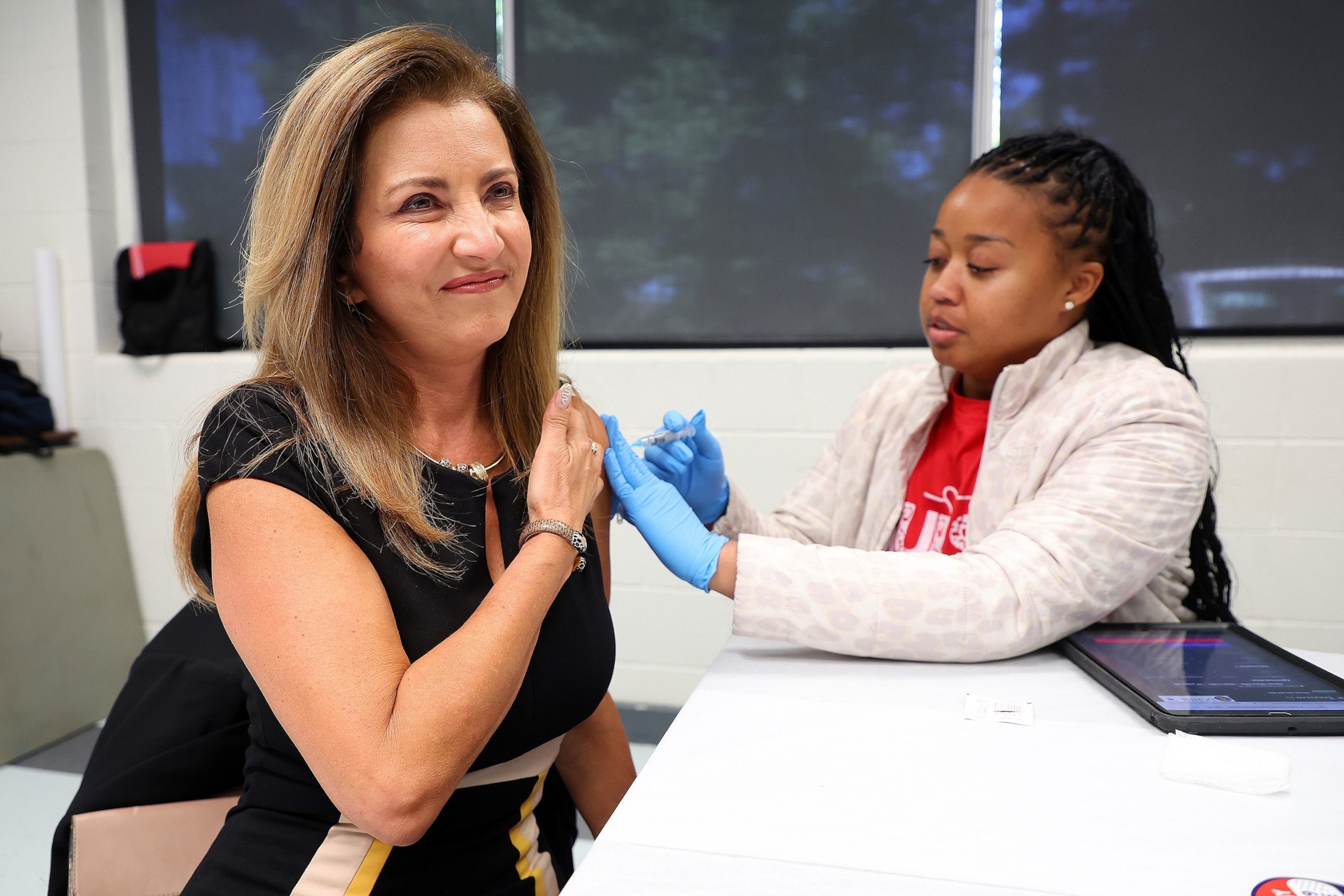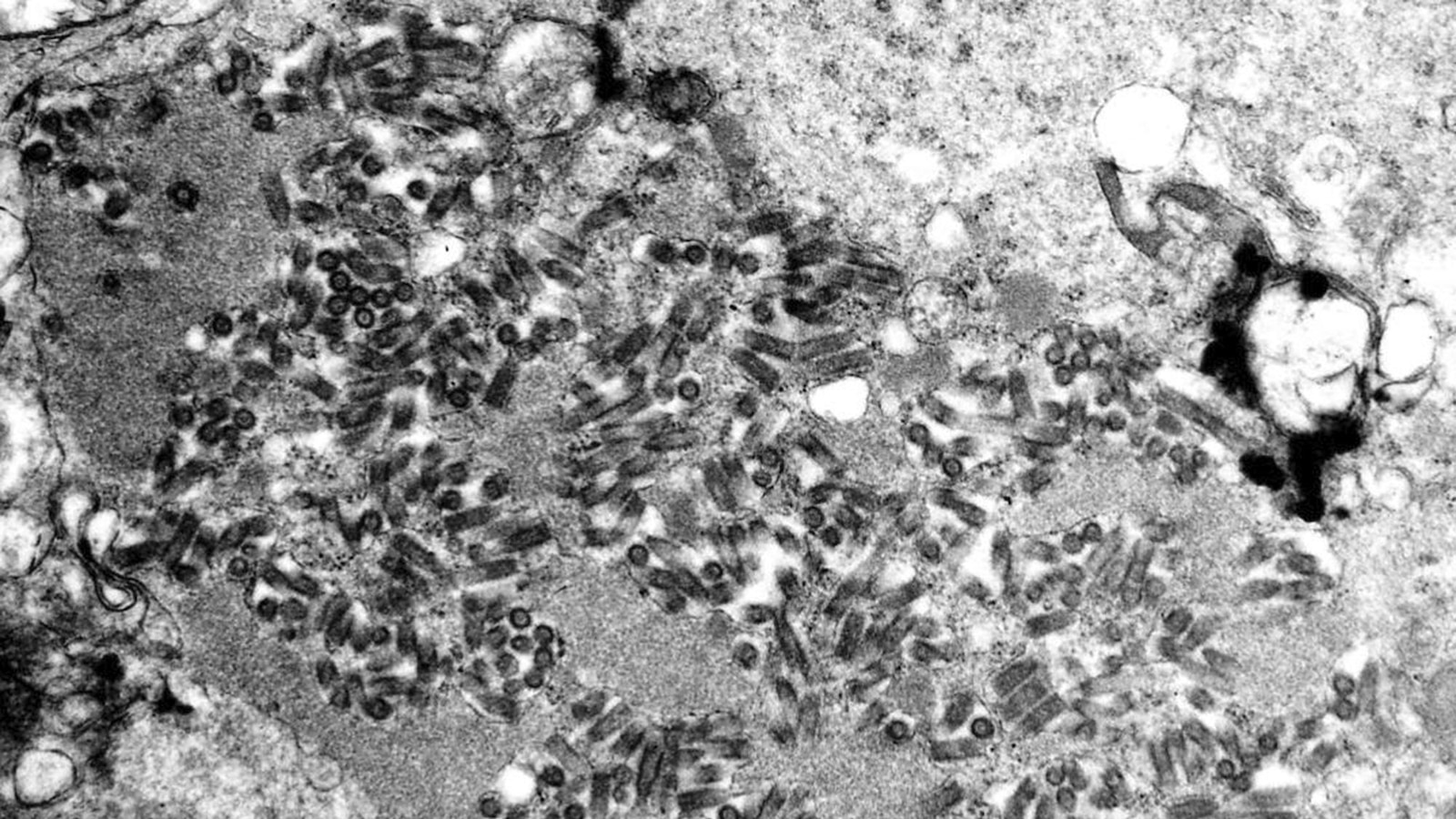As hospitals and health care facilities work to get back up and running after Hurricane Helene slammed into Florida’s Big Bend, affecting several states, the medical supply chain could be at risk.
Baxter International, a health care and medical technology company, announced this week that it must close its largest plant in North Carolina due to flooding and destruction caused by the hurricane.
The plant, located in North Cove, 60 miles northeast of Asheville, primarily manufactures IV fluids and peritoneal dialysis solutions, according to Baxter. It is the largest manufacturer of such solutions in the U.S., employing more than 2,500 people, the company said.
“Our hearts and thoughts are with all those affected by Hurricane Helene,” José Almeida, chair, president and CEO of Baxter, said in a statement. “The safety of our employees, their families, and the communities in which we operate remains our utmost concern, and we are committed to helping ensure a reliable supply of products to patients.”
“Remediation efforts are already underway, and we will spare no resource – human or financial – to resume production and help ensure patients and providers have the products they need,” the statement continued.
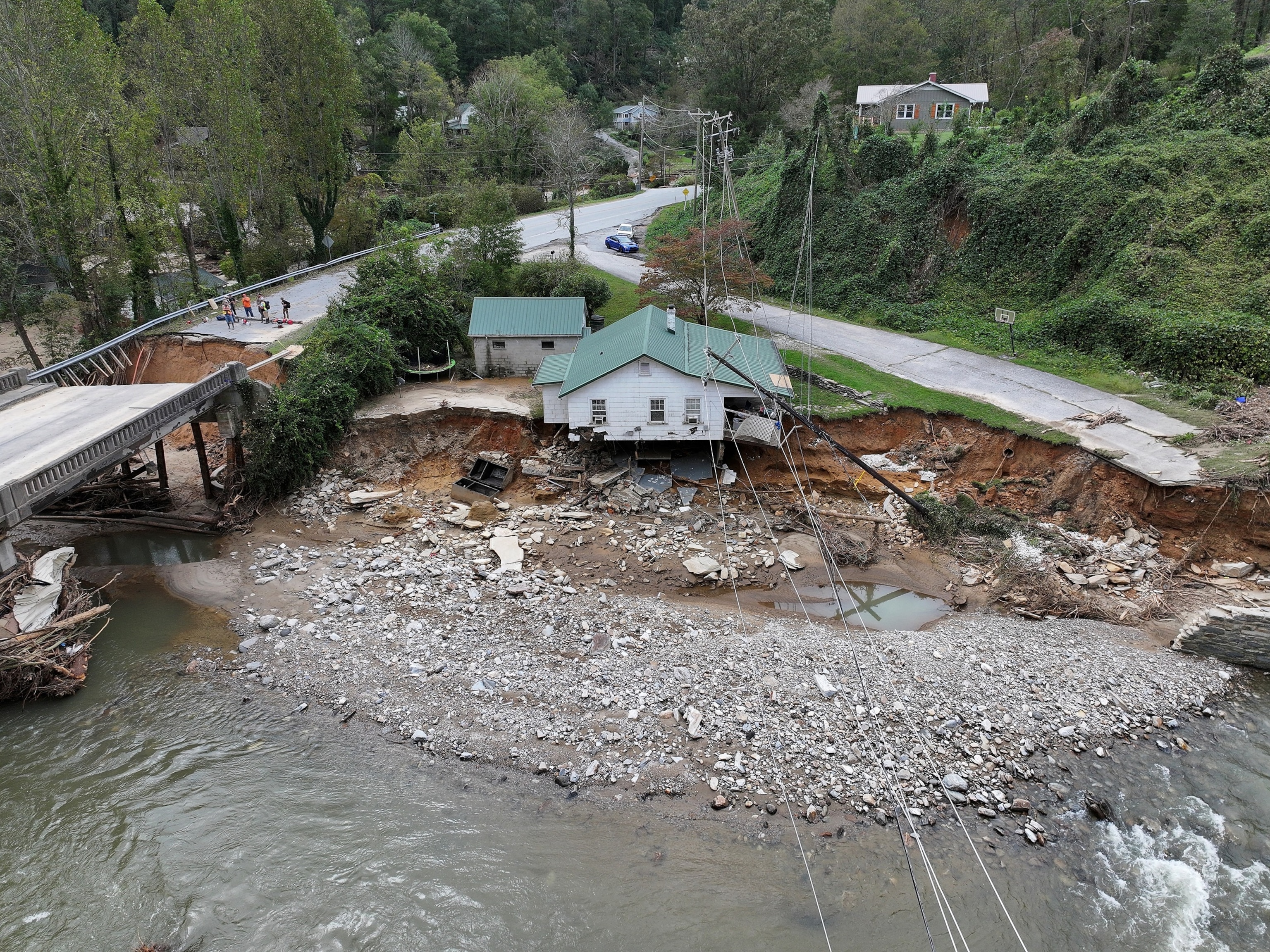
A drone view shows a destroyed building, following the passing of Hurricane Helene, in Bat Cave, North Carolina, Sept. 30, 2024.
Marco Bello/Reuters
Baxter said it implemented a hurricane preparedness plan ahead of Helene, which included evacuation plans for staff and moving products to higher ground or to secure storage. However, heavy rainfall and storm surge “triggered a levee breach,” which led to flooding in the facility.
Among those impacted by the Baxter plant closing is Duke University Health System (DUHS), in Durham, North Carolina, according to William Trophi, DUHS interim president vice president of supply chain.
“[Baxter has] published their action items, and they have announced to us that they’re putting a hold on all distribution for 48 hours to understand what they have in their supply line, and then they’re going to be setting up pretty strict allocations based on prior usage to make sure that everyone is getting their fair share based on their volume and their needs,” he told ABC News.
Trophi said DUHS and Duke University have not seen major disruption to their supply chain following Helene’s landfall, but notes there may be delays in the future if the Baxter plant closure lasts for several weeks, if more plants close, and depending on how long the dockworkers’ strike on the East Coast and the Gulf Coast lasts.
“What we’re doing internally is we’re looking at conservation models, so similar with our IV solutions, we’re going to look at what can we be doing differently to treat our patients in a safe, effective manner to conserve IV solutions,” he said. “And we’ll start to look at other high, critical, sensitive items that could be impacted by this, and look at what can we be doing differently to conserve the way in which we treat our patients in a safe, effective manner.”
Paul Biddinger, chief preparedness and continuity officer for the Boston-based Mass General Brigham health care system, told ABC News that facilities typically begin stockpiling and taking inventory of supplies prior to a natural disaster. After the event has happened, health care centers will work to identify what products are affected by supply chain issues and which patients are using the products.
In the case of the Baxter plant, the products are primarily used by kidney patients, cardiac patients and urologic patients, Biddinger said, adding that hospitals and other health care facilities will typically try to conserve as much of the affected product as possible, and will also investigate any alternatives or substitutions for the product.
“If the shortage is so severe that we just can’t continue with normal usage, even with conservation, then we have to start a process of allocating across our clinical services, of course, prioritizing lifesaving care and emergency care, and then going down our list for more scheduled or more elective kinds of procedures,” Biddinger said.
Samantha Penta, an associate professor of emergency management and homeland security at the University at Albany in New York, said one really important factor to consider when understanding the implications of Hurricane Helene is just how large the affected area is.
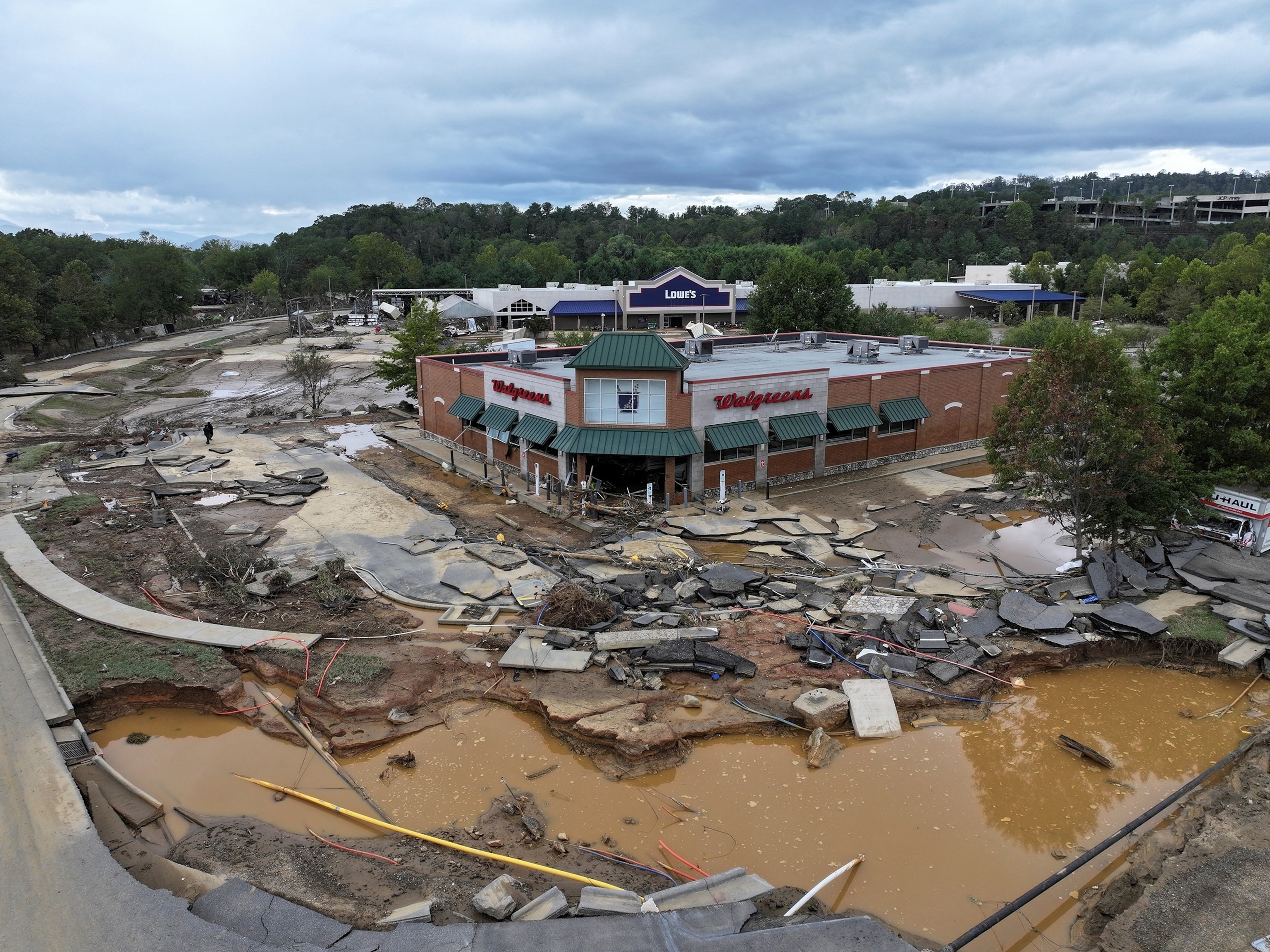
A drone view shows a damaged area, following the passing of Hurricane Helene, in Asheville, N.C., September 29, 2024.
Marco Bello/Reuters
“We’re not just talking about a couple of counties. We’re not even just talking about one state. This has affected multiple states very significantly,” she told ABC News. “One of the things that organizations, in general, including hospitals, long-term care facilities and like – really, anything in the health care sector – does, is you can rely on neighboring facilities.”
Penta said if health care facilities need to send patients to a neighboring facility because they’re running low on supplies or space, or if their facility is damaged, they typically can do so. The same holds true if one facility is running low on supplies; another facility might send them some of their reserves as part of a mutual aid agreement.
But in the case of Helene, “effectively, the people who need help, their neighbors are also being affected. So, any given hospital, the closest hospitals to them, are likely dealing with the same issues,” Penta said. “That further complicates it, because things have to come from even farther away, whether that’s working within a network or ordering from different vendors.”
Over the weekend, North Carolina became the latest state to have a public health emergency declared by the U.S. Department of Health & Human Services (HHS) in response to Hurricane Helene.
The HHS’s Administration for Strategic Preparedness and Response deployed about 200 personnel to the state, including Health Care Situational Assessment teams to evaluate the storm’s impact on health care facilities such as hospitals, nursing homes and dialysis centers, and Disaster Medical Assistance teams to help state and local health workers provide care.
Hurricane Helene, a powerful storm that recently swept through the southeastern United States, has left hospitals and dialysis centers in the region facing significant supply chain challenges. The storm, which brought heavy rain, strong winds, and widespread flooding, has disrupted transportation routes and caused damage to infrastructure, making it difficult for essential medical supplies to reach healthcare facilities.
One of the biggest challenges facing hospitals and dialysis centers in the aftermath of Hurricane Helene is the limited availability of critical supplies such as medications, medical equipment, and dialysis supplies. Many suppliers and distributors have been unable to deliver these items due to road closures, power outages, and other logistical issues caused by the storm. This has left healthcare providers scrambling to find alternative sources for these essential supplies in order to continue providing care to their patients.
In addition to supply chain disruptions, hospitals and dialysis centers are also facing challenges related to staffing shortages and increased patient demand following the storm. Many healthcare workers have been unable to report to work due to transportation issues or personal emergencies, leaving facilities understaffed and struggling to meet the needs of their patients. At the same time, the number of patients seeking medical care has surged in the wake of the storm, putting additional strain on already overburdened healthcare systems.
To address these challenges, hospitals and dialysis centers are working closely with suppliers, distributors, and government agencies to expedite the delivery of critical supplies and ensure that patients continue to receive the care they need. Some facilities have also implemented emergency preparedness plans to help them cope with the increased demand for services and ensure that staff are able to provide care in a safe and efficient manner.
Despite these efforts, the impact of Hurricane Helene on hospitals and dialysis centers in the region is likely to be felt for weeks or even months to come. The storm has highlighted the vulnerabilities of healthcare supply chains in the face of natural disasters and underscored the need for better planning and coordination among all stakeholders involved in emergency response efforts.
In conclusion, hospitals and dialysis centers in the southeastern United States are facing significant supply chain challenges in the aftermath of Hurricane Helene. While efforts are being made to address these challenges and ensure that patients continue to receive the care they need, the long-term impact of the storm on healthcare facilities in the region remains uncertain. It is clear that more needs to be done to strengthen healthcare supply chains and improve emergency preparedness in order to better protect patients and healthcare workers in future disasters.
